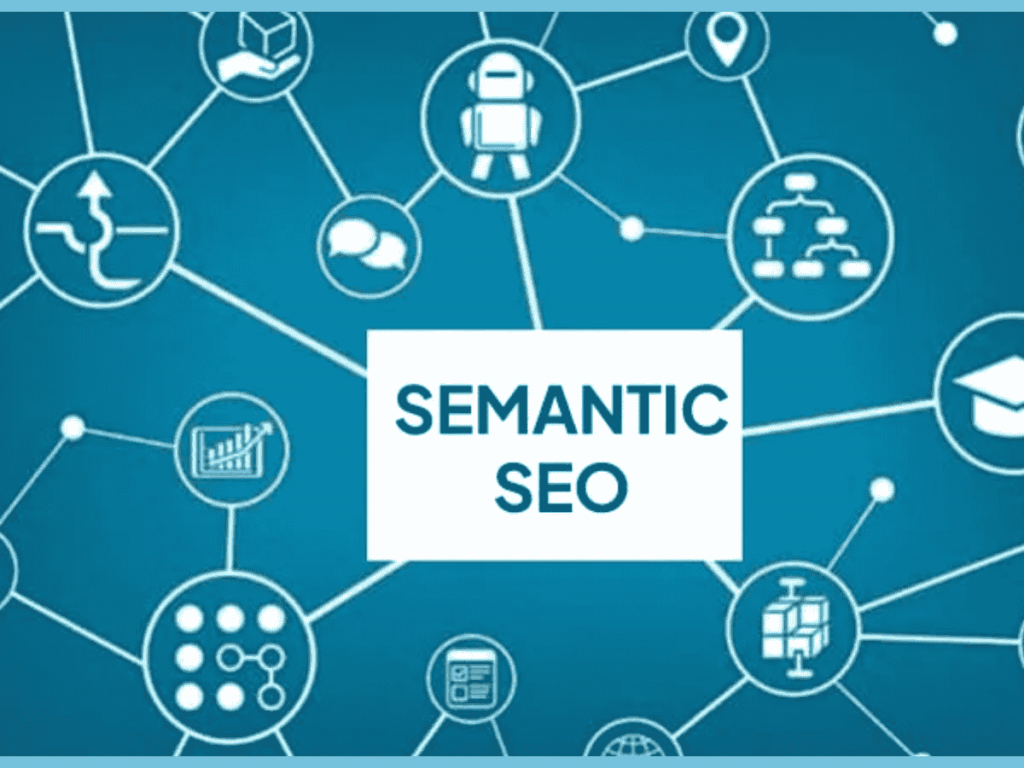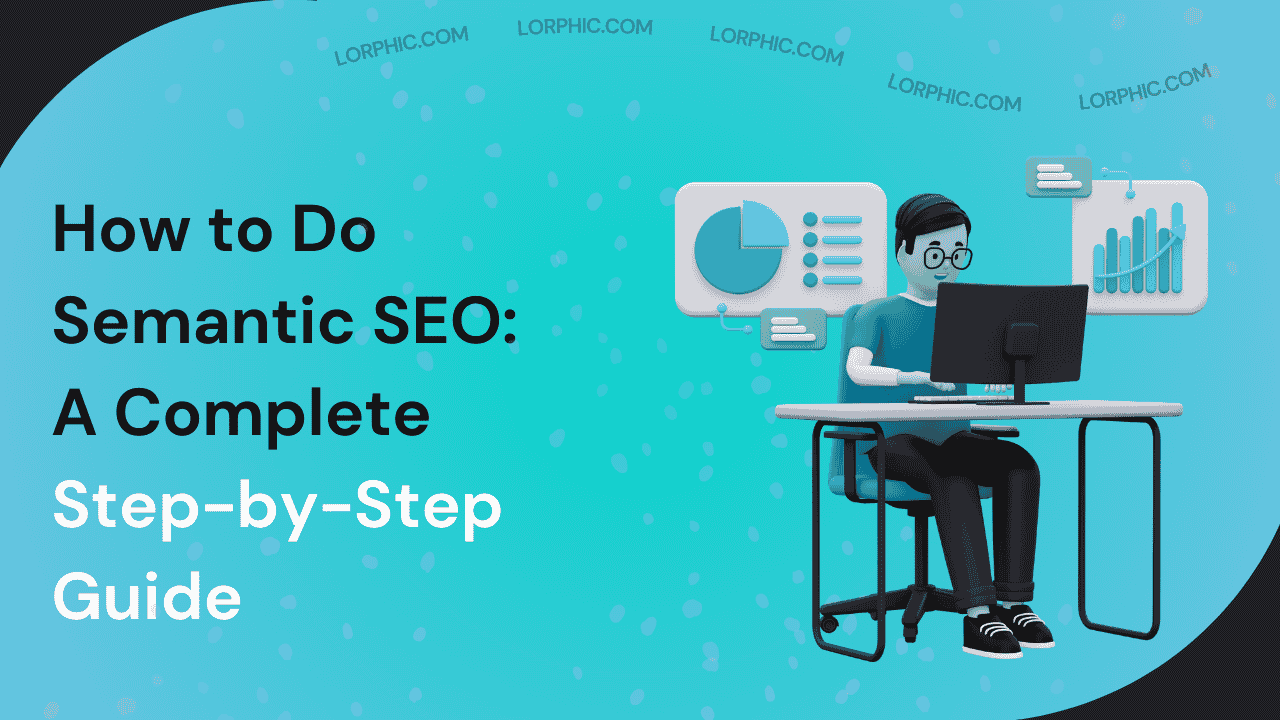In today’s fast-moving digital world, just stuffing your content with keywords isn’t going to cut it anymore. Google and other search engines have gotten much smarter, they don’t just look at the words on your page; they try to understand the meaning behind them. They care about what your content is really about, whether it matches what people are looking for, and how helpful it is. That’s where semantic SEO comes in, it’s all about making your content meaningful, relevant, and aligned with user intent.
Whether you’re a marketer, content creator, or business owner, knowing how to do semantic SEO can make a huge difference. It’s not just about ranking higher; it’s about creating content that truly resonates with your audience while signaling to search engines that you’re an authority on the topic.
Understanding Semantic SEO
Semantic SEO is the process of optimizing content not just for individual keywords, but for the broader meaning and context of a topic. It focuses on how search engines interpret entities, relationships, and user intent, allowing your content to answer questions in a clear, comprehensive, and valuable way.
At its core, semantic SEO:
- Prioritizes topics and concepts rather than isolated keywords.
- Incorporates semantic keywords to provide richer context.
- Aligns content with user intent and natural, conversational queries.
- Enhances content marketing efforts by building authority and topical depth.
In essence, semantic SEO helps search engines understand what your content is truly about, which improves visibility, boosts rankings, and ensures your content is genuinely helpful to readers.
How Semantic Search Works in 2025?

Google has moved far beyond simple keyword matching, relying on advanced AI and natural language processing to understand content and user intent more deeply. Technologies like BERT and MUM help the search engine grasp the nuances of natural language, while RankBrain uses machine learning to interpret complex queries. The Search Generative Experience, or SGE, adds another layer by providing AI-generated summaries and insights, and entity-based indexing allows Google to connect topics, people, brands, and concepts effectively.
Semantic search today evaluates not only the keywords on a page but also the intent behind user queries, the context of the content, and the relationships between different entities and topics. For instance, a search for “how to do semantic SEO” expects a practical, step-by-step guide or actionable instructions rather than just a simple definition, emphasizing the importance of comprehensive and context-rich content. According to Similarweb, an effective semantic SEO strategy requires a clear understanding of how Google interprets entities and the connections between different concepts.
How to Do Semantic SEO? Step-by-Step
Semantic SEO may seem complex, but breaking it down into actionable steps makes it manageable. Here’s a detailed roadmap:
Step 1: Identify Your Core Topic & Search Intent
Before creating content, it is essential to understand what your audience is searching for and why. Start by defining the main topic of your page, such as what is semantic SEO, and then analyze the underlying search intent. Some queries are informational, like “What are semantic terms in SEO,” while others are transactional, such as “Semantic SEO agency services,” or navigational, like “Semantic SEO tools.”
Using tools such as Semrush, Ahrefs, or AnswerThePublic, you can uncover related queries and variations. By focusing on search intent, your content will directly address user needs, increase engagement metrics, and improve the likelihood of ranking for multiple relevant queries, setting a strong foundation for semantic SEO success.
Step 2: Build a Semantic Keyword Cluster
Creating a semantic keyword cluster ensures your content covers the topic thoroughly and aligns with modern search algorithms:
- Primary keyword: How to do semantic SEO
- Semantic keywords: Topic clusters, NLP terms, entities, search intent variations
- Supporting terms: Semantic keywords, content marketing, SEO strategy
Clustering related keywords provides context for Google, helping the algorithm understand the depth of your content. A well-structured cluster allows your page to rank for multiple queries without needing separate articles.
Step 3: Identify Topic Entities and Supporting Concepts
Entities are the nouns of your content, people, places, products, or concepts, that give it context and meaning. In semantic SEO, it is important to identify the key entities relevant to your topic, such as Google, RankBrain, or SEO strategies, and integrate supporting concepts like topical authority, internal linking, and content hierarchy.
Tools like the Google NLP API or MarketMuse can analyze top-ranking pages and extract these entities, giving you a blueprint for what your content should include. Incorporating these entities and related concepts strengthens your content’s semantic relevance, helps Google understand the context, and improves the chances of ranking higher in search results.
Step 4: Analyze Top-Ranking Pages for Semantic Patterns
To create content that performs well, it is crucial to understand what top-ranking competitors are doing. Study their headings, subtopics, and FAQ sections to identify which semantic keywords, entity mentions, and internal links they are using.
Look for content gaps that they may have missed and find opportunities to provide additional value. By reverse-engineering semantic patterns from high-performing pages, you can ensure your content is comprehensive, aligns with user intent, and addresses queries more effectively than existing articles, giving you a competitive advantage in search results.
Step 5: Write Topic-Deep, Context-Rich Content
Creating high-quality semantic content requires thoroughness, structure, and contextual relevance. Follow these key practices:
- Cover the main topic completely: Provide detailed explanations of concepts like how to do semantic SEO rather than surface-level information.
- Use semantic keywords naturally: Include them in headings, subheadings, and body text to give context and meaning.
- Answer related questions and subtopics: Incorporate content that addresses user queries, creating opportunities for internal linking.
- Use clear formatting: Organize your content with H2 and H3 subheadings, bullet points, examples, and visuals to improve readability.
Step 6: Strengthen Internal Linking Using Semantic Relations
Internal links serve as bridges that connect related content across your website. By linking relevant pages using descriptive anchor text that reflects semantic relationships rather than simply repeating keywords, you help both users and search engines navigate your site more effectively.
For example, an article on how to do semantic SEO could link to pages covering the importance of semantic keywords in SEO and semantic SEO agency services. Proper internal linking improves crawlability, reinforces topical authority, and enhances overall user experience, signaling to Google that your content is well-structured and contextually comprehensive.
Step 7: Optimize for User Experience (UX Signals Google Tracks)
A strong user experience is a critical part of semantic SEO. Focus on the following elements:
- Fast loading speed: Ensure your pages load quickly to keep users engaged.
- Mobile-friendly design: Optimize content for all devices to improve accessibility.
- Readable structure: Use headings, subheadings, and bullet points for easy scanning.
- Engaging visuals and examples: Include images, tables, and real-life examples to make content more appealing.
- Clear navigation and internal linking: Help users find related content easily and guide search engines through your site.
Better UX increases dwell time, reduces bounce rates, and signals content quality to Google, enhancing your overall semantic SEO performance.
Step 8: Publish and Monitor Semantic Performance
Once your content is live, the work doesn’t stop. Track how your primary and semantic keywords perform in search rankings, and monitor engagement metrics such as clicks, dwell time, and scroll depth. Continuously refine your content to address new trends, updated entities, or any semantic gaps.
Using tools like Google Search Console, Ahrefs, Semrush, or Surfer SEO helps you measure performance and make informed adjustments. Regular monitoring ensures your content remains relevant, authoritative, and effective in driving organic traffic over time.
Final Thoughts
Semantic SEO is no longer just an optional strategy, it is essential for creating content that truly resonates with both users and search engines. By focusing on meaning, intent, and context instead of isolated keywords, you can produce comprehensive, topic-rich content that ranks for multiple related search queries and answers user needs more effectively.
This approach not only boosts engagement and dwell time but also helps establish long-term authority in your niche. Whether you are exploring what semantic SEO is, working with a semantic SEO agency, or applying semantic principles to your content marketing strategy, mastering semantic SEO has become a critical step for sustained visibility and growth in 2025 and beyond.
FAQ’s
How to perform semantic search?
Semantic search focuses on understanding the meaning behind user queries rather than just matching exact keywords. It considers intent, context, and entities to deliver the most relevant results. Using tools like NLP APIs, semantic keyword research, and topic clusters can help you align your content with how search engines interpret queries, making it easier to rank for a wider range of related searches.
How do I start doing semantic SEO as a beginner?
Begin by clearly defining your main topic and understanding the search intent behind related queries. Next, create semantic keyword clusters and build content that is comprehensive, context-rich, and answers multiple related questions. Regularly monitor performance, refine your content, and expand topics based on gaps or emerging trends to strengthen topical authority over time.
How do I identify semantic keywords and NLP terms?
Use tools like Semrush, Surfer SEO, Ahrefs, or the Google NLP API to extract relevant semantic keywords, entities, and topic relationships from top-ranking content. Incorporate these naturally throughout your headings, subheadings, and body text to provide context, enhance meaning, and improve your content’s relevance in modern AI-driven search results.
Curated by Lorphic
Digital intelligence. Clarity. Truth.


